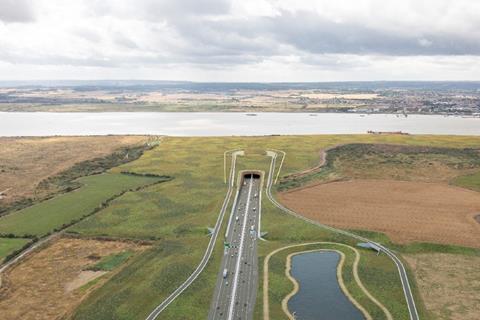Treasury chief secretary Darren Jones says pipeline of 780 private and public sector projects will give industry the confidence to invest
Construction leaders have hailed the government’s publication of its long-promised 10-year pipeline of construction and infrastructure projects, which sets out £530bn of work across 780 separate projects.
The Infrastructure Pipeline, launched as an , is a rethinking of the series of documents published by the previous government. It was published by the National Infrastructure and Services Transformation Authority (NISTA), the government’s new infrastructure advisory body.

It follows on from the publication of the , launched last month, which identified £725bn of funding for public projects over the next decade.
The pipeline includes projects and programmes funded by government, as well as privately funded schemes in the regulated energy and water sectors, schemes promoted by Mayoral Strategic Authorities, and others by what the government describes as “key private sector infrastructure providers”.
NISTA said the £530bn of schemes in the pipeline included £285bn funded by the public sector, with the rest privately funded.
The pipeline, which only includes projects valued at £25m or more for economic infrastructure, and £15m or more for social infrastructure, is to be updated every six months. The website allows users to interrogate the data by individual region or sector, and check the procurement and funding status of individual projects.
Chief secretary to the Treasury Darren Jones said the pipeline, following on from the infrastructure strategy, would give “business leaders and investors confidence about future work, and therefore the confidence to invest in their workforce.”
When it was published last month, the infrastructure strategy said today’s pipeline would follow this month as a “key component” of the strategy. It promised the pipeline would include “significant project granularity, clarity around funding status and will provide a more regularly updated digital output”, as well as “opportunities for private investment in UK infrastructure” as it “further develops and evolves”.
The government added the pipeline could be used to track the government’s progress against its strategy.
The value of the pipeline is smaller than previous iterations. Today’s announcement of a £530bn pipeline compares to the Infrastructure and Construction Pipeline 2023 published by the Conservative government, which set out a ten-year pipeline worth £775bn. The Conservatives had said that £164bn of projects were planned for investment by 2024/25, with their pipeline including 660 projects in total.
>> Also read: Good luck, 10-year infrastructure strategy. You’re going to need it…
>> Also read: Significant, welcome, sensibly cautious but most definitely promising: the experts’ verdict on the infrastructure strategy
>> Also read: Industry welcomes government’s 10-year infrastructure strategy
>> Also read: The infrastructure strategy opens the door to private finance
However, one industry source said a smaller pipeline was welcome if it meant the information about projects was more reliable. The senior construction source said: “The credibility of these numbers is significantly more important than getting a really big number that no-one believes. We want the pipeline to be a truly reliable source of market data.”
Mark Reynolds, executive chair of construction firm Mace, and co-chair of the Construction Leadership Council (CLC), said the “new dynamic approach” was a “major step forward”, and that the pipeline would play a “critical” role in allowing the industry to scale up to deliver 1.5 million homes and revitalised national infrastructure.
He said: “The inclusion of employment data will make a significant difference to firms across the country as they plan for the next few years of growth.
“The construction industry cannot invest in new skills, capacity and technology without clarity on our future workload.”
Jon Phillips, chief executive of the Global Infrastructure Investor Association said publication of the new pipeline was a “positive step” that would strengthen the “UK’s appeal as a destination for private finance of critical infrastructure.”
“Global investors will value a clear pipeline of projects that shows the full scope of the UK’s investment potential,” he said.
Sam Gould, director of policy and external affairs at the Institution of Civil Engineers, said the new Infrastructure Pipeline was “a welcome step forward.”
“Having an agreed list of projects provides essential clarity for the industry to plan – not just for delivery, but to enable better workforce planning and attract necessary finance,” he said.
Employers’ body the Confederation of British Industry said the “dynamic” pipeline was “exactly what business needs to plan, invest, and build with confidence.”























No comments yet